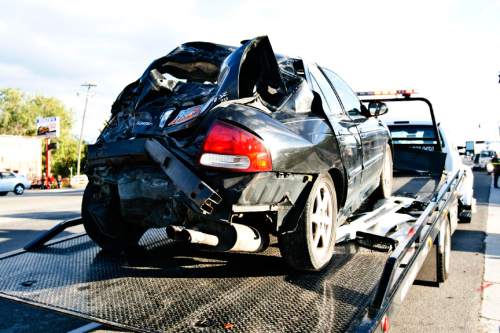This is an archived article that was published on sltrib.com in 2015, and information in the article may be outdated. It is provided only for personal research purposes and may not be reprinted.
A new federal report questions whether state car-safety inspection programs really help decrease accidents. Utah is one of just 16 states that still require the inspections, although Utah mandates them less often during a car's life than others.
The U.S. Government Accountability Office, a research arm of Congress, said this week that while states with inspections find and correct all sorts of safety problems, their accident rates are essentially the same as in states without them.
That doesn't mean that inspections do not help, the GAO says. Their effectiveness is hard to measure because of a lack of national data on crashes, and because police have little time to investigate whether safety problems contributed to an accident.
Utah has had inspection programs since 1936.
The report notes that between 1967 and 1976, the federal government could withhold some highway funds from states that lacked inspection programs. So 31 states and the District of Columbia had them during the mid-1970s.
But once such federal rules were removed, many states dropped inspections to save money — even though the National Highway Traffic Safety Administration (NHTSA) still encourages states to conduct them.
The GAO says officials in the 16 states that still have inspections report they "help improve the condition of vehicles," and point to "the number of failed inspections as evidence of the safety benefit."
For example, Pennsylvania officials reported that about 20 percent of the state's 2.7 million registered vehicles underwent repairs in 2014 after initially failing inspections. Virginia found safety problems in 19 percent of its vehicles.
The report notes that Utah in 2014 reported 47,172 failed inspections just for "problems for glass," which the report says included "glass that is broken, missing, shattered or jagged," or had "issues with tinting, wipers/washer and mirrors."
Twelve states, including Pennsylvania and Virginia, require annual inspections. Three other states require them every other year.
Utah requires $15 inspections in the fourth year of a car's life, the eighth year, the 10th year and annually thereafter. That was a compromise enacted in 2012, when then-Rep. John Dougall (now the state auditor) had attempted to end Utah's then-biennial inspection program.
Dougall argued, as the GAO report says, that few crashes are reported caused by equipment failures, and he wanted to use money saved by eliminating the program to hire more Highway Patrol officers to better enforce driving laws. Others argued halting inspections would compromise safety.
The GAO report also says that states with inspection programs report problems overseeing them. They have few officials to do covert checks to ensure stations perform inspections correctly, and some report problems with inspectors passing cars that should fail — or others that require unneeded work to make money.
It also says states complain that while federal officials encourage inspection programs, they do not help states keep up with changing technology to determine what should pass or fail.
The GAO recommends that NHTSA begin a communication channel, such as Web-based forum, to help states with such issues. That agency agrees it would be beneficial.



